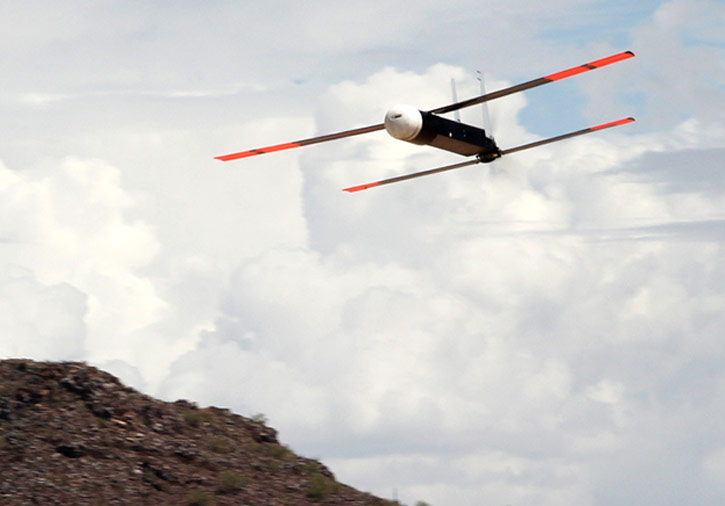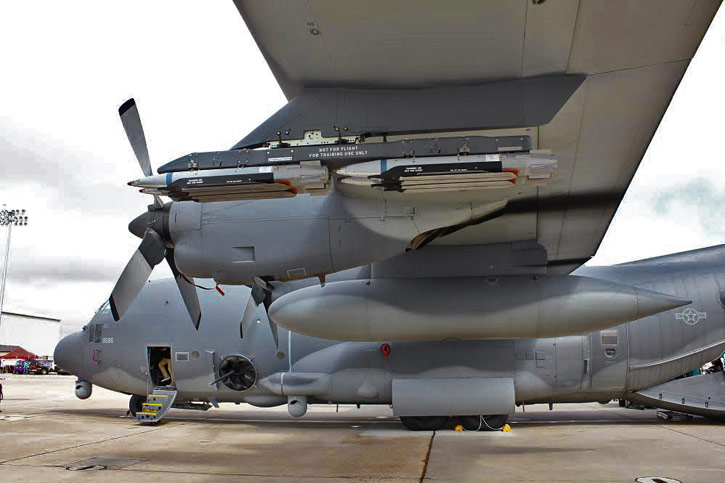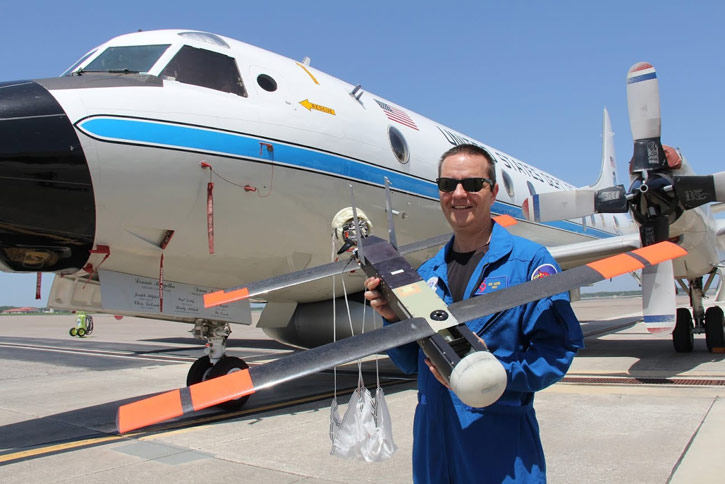
While increasing the use of drones in reconnaissance and attack missions across the globe, the US military is seeking new unmanned systems that would extend the capabilities of manned platforms – in special operations, air and ground dominance or air combat.
One of the most advanced applications is the use of air-launched drones to enable Air Force Special Operations Command (AFSOC) AC-130 aerial gunships and MQ-9 Reaper drones to operate in all weather conditions, particularly above the clouds.
The Tactical Off-Board Sensors (TOBS) uses unmanned aerial systems released from an aircraft flying at a high altitude, to provide close-in view of the target area, when flying under the cloud base. AFSOC currently utilizes Raytheon’s Coyote small UAV for the TOBS mission. The baseline system could be fielded this year for operational testing, followed by full-scale production of an objective system beginning in 2018. A full up production system could be fielded in 2019-2020 timeframe.
“It’s a system off-the-shelf that’s already been developed,” said Bill Lane, AFSOC’s chief of strike and ISR requirements, “Contractors have already demonstrated it out of a common launch tube [like those on the AC-130]. It’s something that we could very quickly integrate on the airplane, train crews and try to learn from.”
The Coyote, built by Raytheon is a compact drone that can be carried in a common launch tube (CLT) with wings and tail folded. The limitations on wingspan and battery size restrict the endurance and operating range of this specific drone. A future platform, designed to meet AFSOC objective performance is designed by Area I Inc. These platforms are expected to support high level of autonomy and improved sensors, compared to the technology available today. According to AFSOC requirements these drones should be able to operate with minimal user intervention, while providing the crew imagery and sensing as other on-board sensors do.
While TOBS are designed to be retrievable on training or close air support missions, in operational use these systems will be disposable. The drones could also enable AFSOC to operate large platforms such as the AC-130J Ghostrider in non-permissive environments, where the TOBS could provide targeting for small diameter bombs, or other standoff precision guided munitions (SOPGM). These weapons will become part of the Ghostrider’s arsenal as it is fielded. AFSOC plans to convert 37 MC-130J aircraft into AC-130J, under a $2.4-billion program to grow the future fleet of operational gunships.


While TOBS are designed as expendable drones, at a cost of $50,000 per unit, these drones are not spent lightly. Therefore, the Air Force is pursuing other, more affordable off-board sensors that could be used in swarms. Last year the US Navy have tested Coyote operation in swarm, under the Low Cost UAV Swarm Technology (LOCUST) demonstration.
Two programs that have been publicized are CICADA, developed by the Naval Research Laboratory (NRL) and Perdix, developed by students at MIT with support from the pentagon Strategic Capabilities Office (SCO). Perdix has a low drag fiberglass fuselage, attached to spring loaded carbon fiber wings designed with custom airfoils. The rear wings have winglets and elevons for flight control. The drone uses a miniature electrical engine driving a custom pusher propeller to keep the drone airborne for the duration of the mission. The drone draws power for propulsion and on-board systems and sensors from a pack of lithium polymer batteries located in up front.




















